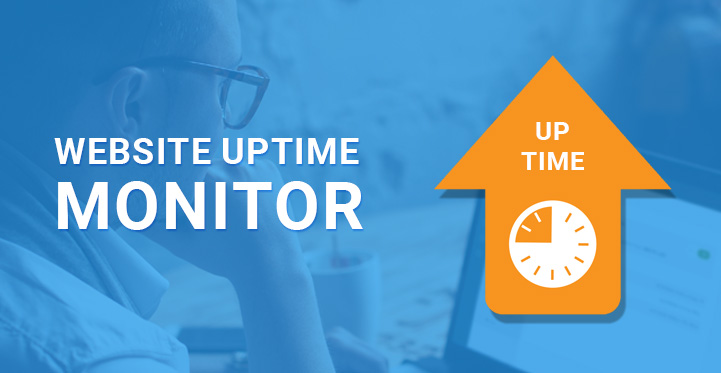
Now a crashed server is a matter of ‘When’, not ‘If’. In today’s world, no business can afford to be absent from the internet. As you will see later, an unreachable website can cost millions of dollars. Any business needs to monitor website uptime.
How to Monitor Website Uptime
Uptime refers to how long a website is accessible to users. Website downtime occurs when a website crashes and becomes unreachable.
Uptime is the total time a website was available during a period (month, year, etc.). The holy grail is 100% uptime, but that is highly unlikely. So focus on the ‘five nines’ – 99.999 percent uptime.
A 99.999 percent annual uptime rate equates to only 5.25 minutes of downtime per year. However, 99.9% uptime results in 8.76 hours of downtime; 98 percent (still good) results in 7 days and 7 hours of client inaccessibility.
Website uptime monitoring was created to check if a website is available. This service performs automatic 24/7 checks and notifies users if there is any downtime.
So, why is it so important to constantly monitor uptime, and what happens when a major failure occurs?
Downtime Consequences
-
Revenue loss
In the highly competitive Internet environment, if your website is unavailable, users will simply switch to your competitor’s. While this is unfortunate for offline businesses, it is vital for e-commerce.
-
Bad Reputation
The brand’s reputation also suffers due to the website downtime.
When your website is unavailable, you get irritated customers, complaints on Twitter and other social media, and prospects who will never convert. And by reputation, I mean a brand’s reputation as a whole, not just the company’s website. Because people extrapolate, a slow, clunky, or unavailable website may tarnish the brand and its product.
-
Loss of Google Ranking
GoogleBot regularly checks your website for ranking factors, but we rarely consider uptime. But if your site is down, the crawler can’t access it.
Google is aware of the possibility of downtime. For a day, the website needs to be maintained. However, if a website has a recurring downtime issue and the crawler cannot access it, Google will not send users to that website. As a result, your ranking will plummet.
-
Cyber-Attacks
Website downtime can be caused by malicious actors sending excessive traffic to the website, causing the servers to crash. This is called Disruptive Denial of Service (DDOS). Without going into details, you may not be aware that your website has been hacked, while your users are duped, valuable and sensitive data is stolen, and your brand’s trust is eroded.
Input/output monitoring
Why do I need Uptime Monitoring if it doesn’t prevent website crashes?
-
Be aware of any downtime
Your website may experience brief outages that go unnoticed but impact your search engine ranking. GlockApps lets you set check frequency up to 1-minute intervals to ensure you get an alert when your device goes down.
-
Protect your reputation
In fact, a person will not wait more than 2-3 seconds for a website to load. The GlockApps Uptime Monitor also shows a degraded status, which means a website is reachable but not fully functional.
-
Avoid financial losses
Timing is everything, whether it’s a server crash or a hacker attack. The sooner you learn about the problem, the sooner you can act. GlockApps Uptime Monitoring gives you the option to receive notifications via Telegram, Slack, PagerDuty, email, or SMS.
It’s time to take charge of your website!